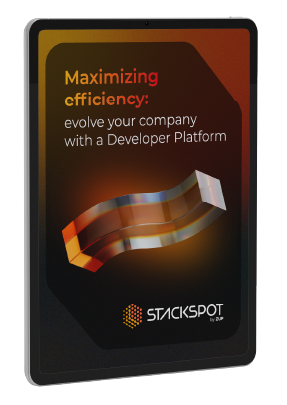Technology integration in business is about more than just adopting tools. It reshapes the very fabric of how a business operates. There’s a difference between a tool on a computer and a process everyone uses. Integration helps you collaborate dynamically between your technology and seamless business operations.
Why is technology integration important?
Experts design technology tools to solve (or at least alleviate) as many problems as possible. You can find technological tools for just about everything:
- Efficiency
- Automation
- Education
- Communication
- Security
- Collaboration
- Analytics
These are just the areas that come to mind first. Technology integration in business tackles every facet of business, regardless of industry.
When it comes to software development, technology integration improves the quality of life and quality of outcome for every single member of the team.
More to the point, when you integrate systems, they work fluidly with your operations and other facets of technology. You get a streamlined experience with fewer disruptions and distractions.
How do you implement technology?
You already use technology throughout your daily activities. How do you expand on that and find additional technological solutions to solve your problems?
It starts with research.
Think of a problem you want to solve. Then, quickly search to see what tech solutions are already waiting for you. Among those solutions, investigate which can integrate with your existing infrastructure.
After that, it’s a matter of finding the proper performance for your cost range and doing trial runs to ensure it meets your expectations.
Strategic tool selection: how to start
So far, we’ve set up a general overview of technology integration. From here, we can look deeper at specifics.
Where do you even begin in your search?
If you don’t already have a crucial problem that you want to solve, then imagine a few categories:
- Costs
- Performance bottlenecks
- Cloud
- Data collection
- Vulnerabilities
Considering those examples, we can explore tools for each category to see where you can begin integrating to impact your operations and outcomes directly.
Automation for Efficiency
Efficiency solutions are the most common you’ll find throughout technology integration. Every new device and program intends to improve workflows in some way or another.
Specifically, automation reduces workloads for every team member, boosting efficiency across the board.
What does that look like in the realm of software development? There are countless examples, so let’s entertain one to make the point.
Think about validation. A developer has a new chunk of code ready to combine with the more significant software package. It would help if you validated the new segment to ensure it works before that integration. Otherwise, you end up with unpredictable errors, and debugging spirals out of control.
You can automate most of the validation process through your version control system. It leaves developers spending substantially less time on validation and more time coming up with solutions.
That one specific automation can save hundreds of hours in the development cycle. Imagine just a handful of other points where you could integrate automation. Nothing of tools like generative AI creates a positive feedback loop of efficiency.
Collaborative Platforms for Team Synergy
We all love discussing synergy, but it’s about teamwork when you boil it all down. Developers are smart and talented. If you give them the means to synergize their work, they will.
Any technology you integrate into collaboration empowers teamwork and collaboration by default. You already have some collaborative tools. For instance, we already discussed version control.
Other collaboration tools include communication platforms (anything from email to Zoom). File sharing and remote connections can improve collaboration.
Even team management tools improve collaboration. If you have a platform that every member can see, allowing you to set goals, display the overarching picture of the project, and update progress in real-time, you’re empowering collaboration.
Cloud Integration for Flexibility
If file sharing and remote connections help with collaboration, cloud integration provides value. After all, many of your collaborative tools live in the cloud, and for good reason.
The truth is that cloud resources improve flexibility on many fronts. For starters, collaborators are no longer bound by proximity. That allows more than just work-from-home days for the core team. You can offshore parts of the project without creating significant complications.
That allows you to pull in more minds and experience as needed while fully controlling the project.
Cloud integration ties into more than just developmental flexibility. It increased project management, security, testing, deployment, maintenance, and marketing options.
Data Analytics for Informed Decision-Making
On a different note, data analytics offers power to every decision. You can track time, money, file sizes, and countless other KPIs through every process step.
You can track so much data that it’s easy to overwhelm yourself and your staff. Yet, automation solves even this issue.
With automated data and analytics, you can rapidly sift through more metrics than you know what to do with, and that’s the point. As you sort through piles of data and performance indicators, you can see which stand out and grab those as your essential metrics.
You just used analytics to pick your analytical focus. Now, you have informed data management, which you can use to steer the ship. How you organize the business, where you make your investments, how you optimize. . . they all benefit.
Cybersecurity Measures for Seamless Operations
Cybersecurity only works when you have large-scale buy-in. After all, a disturbing number of security breaches involve personnel failure. Cybersecurity relies on behaviors, whether someone falls for a phishing scam or uses an insecure connection.
Technology integration in business helps by removing a lot of personal decisions from the process.
As a starting point, you can use access management to limit what each person can touch in your systems. This segmentation mitigates any damage from any individual’s lapse in security practices.
You can use automation tools that scan files, block intrusion, secure data, and more.
How an EDP can help your organization
It boils down to a software platform if you want to summarize everything you just read. Typically, we call it an Enterprise Developer Platform (EDP). It enables software development by allowing developers to make solutions for themselves.
All of it integrates through the EDP, creating a seamless operation. Collaboration, security, automation, cloud integration, and analytics fold into a single platform.
EDPs can help a lot when they standardize the use of technologies adapted to the context of each company.
In this way, teams create more reliable software, reduce cognitive load, speed up onboarding, improve governance practices, and focus more on business features. It’s a one-stop place for robust, varied solutions that bring your development efforts to a head.
With your EDP in place, you can build future-ready business operations that are seamless and efficient.
Would you like to learn more about our EDP solution? Watch the StackSpot EDP video!
Conclusion
Here, you will learn more about the integration of technology and its importance in improving the quality of a team’s deliveries.
Getting started can be challenging, but choosing the right strategic tool makes working with automation, platforms, cloud, data, and security much more accessible.
You can find These features in EDPs.
Smoother business operations lead to better final products. You can leverage tools, mainly through your EDP, to achieve such seamless practices.
If you want more ideas to help with it, follow us on LinkedIn.












